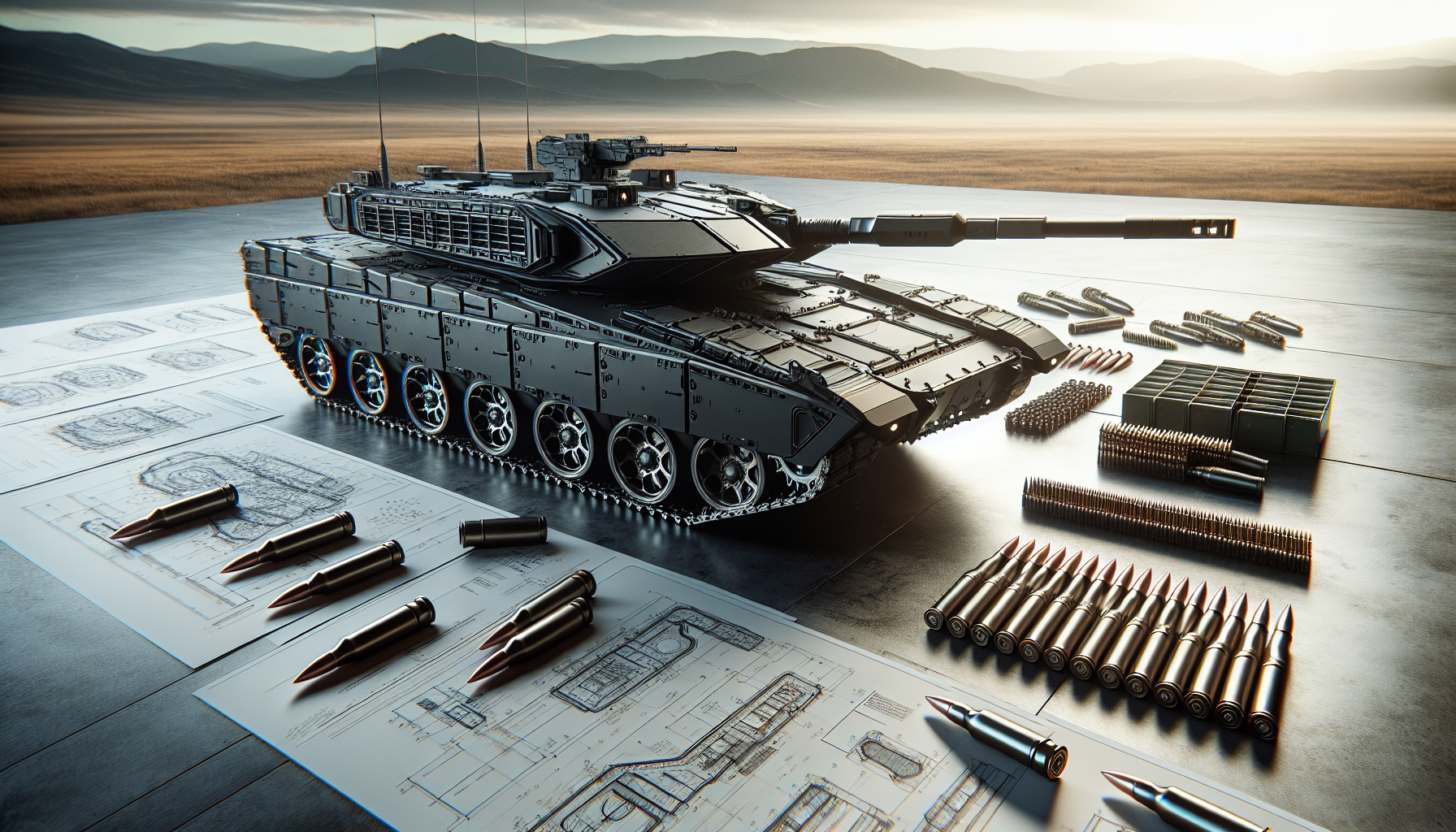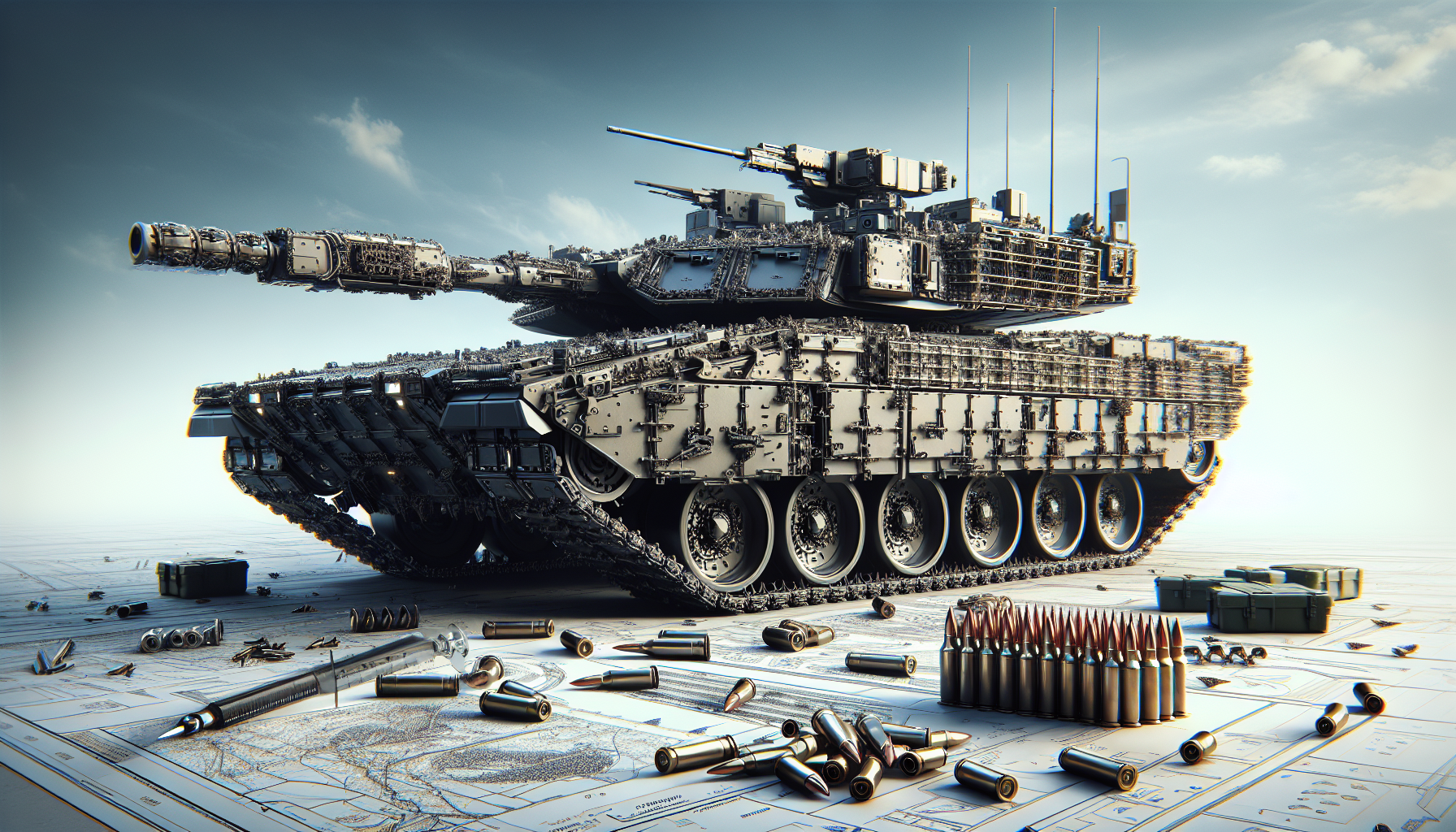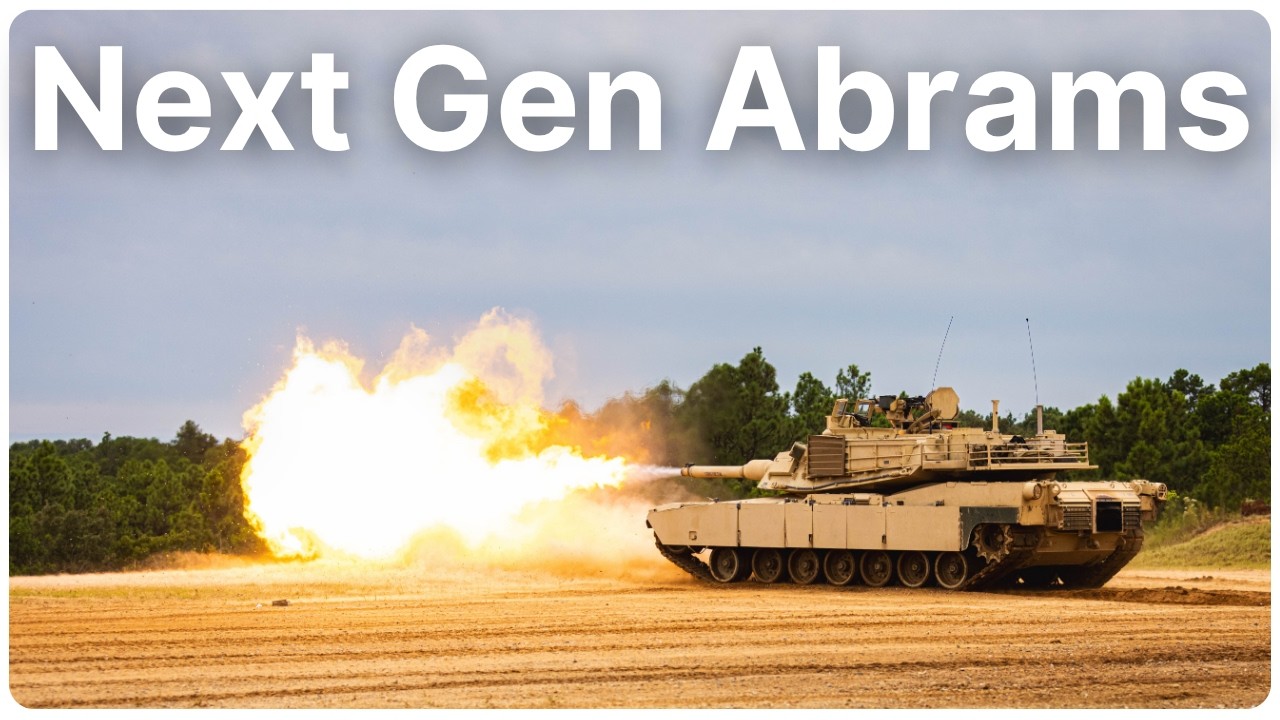The U.S. Army’s strategic vision for the M1E3 Abrams signals a significant evolution in armored warfare technology. This article explores the implications of transitioning to a next-generation redesign amidst a landscape increasingly shaped by drones and unconventional combat scenarios. A thorough examination of the M1E3 will be provided, including insights into the cancellation of the SEPv4 model and the Army’s rationale regarding the operational roles of tanks in future conflicts.
Key topics will include the anticipated upgrades to the Abrams series, the enduring relevance of tanks despite contemporary battlefield challenges, and a global perspective on tank utilization. Through this analysis, a clearer understanding of the Army’s investment in the M1E3 Abrams and the potential impact on armored warfare doctrine will emerge, helping to assess the feasibility and practicality of tanks in the modern military environment.
The Future of the Tank in Modern Warfare
The landscape of modern warfare is a constantly evolving tableau, where traditional platforms contend against an increasing array of unmanned systems and advanced weapons technology. The battlefield dynamics today reflect a profound shift in how ground forces operate, and you must analyze these changes to understand the future of armored warfare. The introduction of sophisticated drone capabilities and the ubiquity of cyber warfare have transformed combat scenarios, challenging the relevance of conventional armored vehicles. Furthermore, these advancements push you to reconsider the very nature of ground combat and the roles that tanks play within it.
Analysis of current battlefield dynamics
You will see that contemporary conflicts highlight the complexities of asymmetric warfare, where non-state actors leverage technology to counter traditional military advantages. Modern armed forces, including the U.S. Army, must grapple with the implications of this new reality. Urban environments, for instance, present unique challenges, as they necessitate rapid maneuverability and adaptability—the very aspects where unmanned systems excel. Drones offer reconnaissance and strike capabilities from the skies, often negating the advantages that heavy armor once provided. As a result, you must examine the implications of these shifts for how armored forces are deployed.
Role of unmanned systems and drones
The advent of unmanned systems indicates a significant paradigm shift in combat strategies. You may recognize that drones serve not only as platforms for intelligence gathering but also as pivotal tools in direct engagement. With their ability to conduct surveillance and deliver precision strikes, drones create a layered defense that often forces armored units into precarious situations. Consequently, your consideration of future armored warfare will inevitably include the integration of unmanned systems, necessitating a re-evaluation of the tank’s role on the battlefield.
Importance of armored vehicles in diverse combat scenarios
Despite the rise of drones and unmanned systems, you cannot overlook the enduring importance of armored vehicles in certain combat scenarios. Tanks provide formidable firepower, protective capability, and psychological deterrence that smaller vehicles or drones lack. In high-intensity conflicts, particularly in open terrains, the sheer presence of tanks can be instrumental in bolstering troop morale. As you navigate the complexities of modern warfare, the challenge will be to identify when and how to deploy these armored stalwarts effectively, ensuring their relevance in a multi-domain environment.
Overview of the M1E3 Abrams
The M1E3 Abrams represents a significant leap in tank technology, poised to reshape the United States’ armored capabilities for the next generation. As you explore the features of this redesigned tank, it is crucial to appreciate the technological advancements that distinguish it from its predecessors and its role in a future where adaptive weapon systems will dominate.
Key features and technological advancements
The M1E3 Abrams is equipped with state-of-the-art technologies that enhance its lethality, survivability, and situational awareness. Key features include advanced armor compositions designed to counter contemporary threats, a more powerful engine that facilitates improved mobility, and integrated communications systems for seamless battlefield connectivity. In this era of information warfare, the M1E3’s ability to network with other military assets will prove crucial, as it allows for enhanced command and control in multi-domain operations.
Comparison with previous Abrams models
To appreciate the M1E3 fully, you should compare it with earlier iterations of the Abrams series. The original M1 tank has undergone numerous upgrades since its introduction. The M1A1 and M1A2 models brought significant improvements in armor and firepower, but the M1E3’s advancements in digital integration and multi-layered defense systems mark it as a pivotal step forward. As you assess these upgrades, consider the evolving threats that necessitate such innovations, particularly in light of current global military engagements.
Projected capabilities and performance enhancements
Looking ahead, it is essential to focus on the projected capabilities of the M1E3 Abrams. With its enhanced sensor suite, you will find that it can detect and engage targets at unprecedented ranges. The tank’s anticipated performance enhancements, including improved fuel efficiency and agility, are designed to ensure that it remains a formidable force in the evolving warfare landscape. As combat conditions continue to shift, the M1E3’s adaptability will be critical in ensuring that it remains relevant in various operational contexts.

Cancellation of the SEPv4 Program
As you navigate through the history of armored warfare development, it becomes evident that not all modernization efforts meet with success. The recent cancellation of the SEPv4 program has significant implications for the M1E3 Abrams and broader armor modernization strategies.
Reasons for program cancellation
The SEPv4 program faced scrutiny due to rising costs and shifting priorities within the U.S. military. You will find that the Army’s leadership sought to redirect resources toward addressing emerging threats more effectively, particularly the challenges posed by peer and near-peer adversaries. The decision to terminate SEPv4 reflects a pragmatic response to fiscal constraints and desirability for streamlined modernization efforts that directly align with operational needs.
Impact on the development timeline of M1E3
The cancellation of the SEPv4 program has inevitably shaped the development timeline of the M1E3. With lessons learned from both operational experiences and developmental challenges, you may note that this decision has prompted the Army to concentrate efforts on what it views as a more coherent and compelling strategy for armored warfare. However, this also means that you must remain mindful of the impact any delays may have on operational readiness and the technological edge that the Abrams series aims to maintain.
Strategic shift in armor modernization plans
The SEPv4 cancellation signals a strategic shift in how the U.S. Army approaches armor modernization efforts. Rather than pursuing incremental upgrades across multiple programs, a consolidated focus on fewer, enhanced projects may yield more significant returns on investment. By concentrating resources on the M1E3 and similar initiatives, you observe a commitment to producing next-generation capabilities that align with contemporary combat scenarios, ultimately fostering a more versatile and resilient armored force.
Incremental Upgrades from Current Models
In the midst of evolving threats and technologies, the M1E3 Abrams will benefit from incremental upgrades derived from current models. These enhancements will ensure that the tank remains competitive and relevant in modern combat situations.
Highlighting notable upgrades in sensors
One of the most notable presents in the M1E3 Abrams is the substantial upgrade to its sensor suite. Enhanced targeting systems and robust situational awareness capabilities allow the tank to detect and engage threats with greater precision. As you consider these advancements, it is essential to recognize the tank’s ability to gather and process data, integrating it within broader command structures. This interconnectedness enhances the performance of infantry and combined arms operations, allowing you to visualize a battlefield that is increasingly reliant on real-time information.
Advancements in armor and mobility
Armor and mobility remain at the forefront of the M1E3’s design considerations. You can expect improvements in composite materials and reactive armor technologies, which provide better protection against a diverse range of munitions. Coupled with enhanced engine performance, these developments afford the M1E3 superior mobility on the battlefield. As wars unfold in urban jungles and contested environments, the ability to maneuver quickly while maintaining robust protection is vital—offering you a strategic edge in modern engagements.
Integration of digital warfare capabilities
As warfare evolves, the integration of digital capabilities into the M1E3 Abrams is crucial. You must recognize how networks of interconnected platforms can perform synergistically, allowing for more significant intelligence sharing and operational flexibility. The tank’s ability to engage in electronic warfare and cyber defense is increasingly relevant, enabling it to counter adversarial technologies effectively. The intersection of digital warfare and traditional armored capabilities epitomizes the future of military operations, forcing you to rethink traditional models of warfare.

Operational Concepts for the M1E3
As the operational scope of the M1E3 Abrams expands, so too must its envisioned role in multi-domain operations. Understanding these operational concepts will be critical to leveraging the tank’s capabilities effectively.
Defining the envisioned role in multi-domain operations
You can define the M1E3’s role in multi-domain operations as a versatile platform that integrates air, land, space, and cyber capabilities. The tank’s advanced networks and sensor technologies position it as a core asset in collaborative engagements, capable of effectively coordinating with air units, infantry, and unmanned systems. Thus, its efficacy is inherent in the seamless interplay of these forces, responding swiftly to fast-changing battlefield conditions.
Interactions with other military assets
The M1E3 will not operate in isolation; rather, its interactions with other military assets are fundamental to creating a comprehensive combat strategy. You will need to consider how tanks work symbiotically with infantry, artillery, and air support. The tank’s firepower can complement the precision strikes of air assets, while sensor capabilities enhance the situational awareness of the entire force. This integrated approach underscores the importance of rehearsing multi-domain tactics and emphasizes your role in fostering cooperation among various military branches.
Future use cases and operational scenarios
Imagining future use cases for the M1E3 allows you to appreciate the breadth of its operational potential. Scenarios could include urban warfare, where the tank employs its mobility and protection to dominate contested environments, or dynamic maneuvers in open terrain, where speed and firepower are maximized. Counter-insurgency operations may also see the M1E3 deployed for stabilization efforts, characterized by echelons of collaboration with civilian populations. As you explore these varied scenarios, the importance of strategic flexibility in deploying ground assets becomes evident.
Global Trends in Armored Warfare
To effectively position the M1E3 within the larger context of armored warfare, you need to examine global trends and how they inform the development of military assets. As nations evolve their armored capabilities, lessons from contemporary conflicts provide significant insights.
Comparison of U.S. tanks with foreign counterparts
A comparative analysis of U.S. tanks with foreign counterparts reveals varying approaches to armored warfare. European models such as the Leopard 2 and Russian T-14 Armata have taken different routes in armor design and technological integration. You will find that advancements in lethality, protection, and mobility must inform the U.S. armored force’s ongoing evolution. Acknowledging these attributes is essential for developing an effective modernization pathway that addresses both current deficiencies and future operational needs.
Lessons learned from the Ukraine conflict
The ongoing conflict in Ukraine serves as a crucial case study for understanding the modern battlefield’s complexities. You may find that both Ukrainian and Russian forces have harnessed a range of armored assets innovatively, revealing important lessons about mobility, coordination with unmanned platforms, and the effective use of information warfare. Observations from this conflict might inform U.S. military strategy and modernization plans, particularly in terms of anticipating the evolving threats of drone warfare and hybrid conflicts.
Emerging trends in tank design and tactics worldwide
Emerging trends in tank design and tactics indicate a growing emphasis on versatility and multi-role functionalities. You should note how modern tanks increasingly incorporate modular designs, allowing for rapid upgrades and adaptability in multiple combat scenarios. Tactical doctrines are also shifting toward network-centric warfare, where the effectiveness of tanks is enhanced by their ability to communicate and collaborate across various force components. These trends compel you to rethink not only the structural characteristics of armored vehicles but also the tactical frameworks that govern their deployment.

Evaluating the Necessity of Tanks
As you consider the future of armored warfare, evaluating the necessity of tanks becomes paramount. This exploration encompasses varied arguments for and against maintaining a robust armored force.
Arguments for maintaining a robust armored force
The necessity of tanks in modern warfare is underscored by their historical effectiveness as platforms for direct engagement. Tanks provide not only direct firepower but also protective capabilities for infantry units in team operations. As you delve into this discussion, consider the psychological impact tanks have on adversaries and the morale they instill within friendly forces, as well as their capacity for conventional deterrence against peer competitors.
Critiques of tank reliance in modern conflicts
Despite the arguments in favor of their utility, critiques surrounding reliance on tanks in modern conflicts are salient. The increasing lethality of anti-tank weapons and evolving warfare tactics, notably in asymmetric contexts, illuminate vulnerabilities that must be addressed. You cannot ignore the potential drawbacks of traditional armored forces in urban conditions, where mobility and responsiveness overshadow brute strength. As such, the task at hand is devising strategies that capitalize on the strengths of tanks while mitigating their weaknesses.
Technological advancements vs. traditional roles
Finally, the relationship between technological advancements and traditional roles of tanks presents a complex narrative. Emerging technologies offer opportunities to redefine how tanks operate, yet these same advancements can pose existential threats to their relevance. Therefore, you face a dual challenge: innovating within the armored domain while ensuring that tanks remain integrated with broader military objectives and strategic imperatives. Balancing these elements will be crucial as you navigate the evolving landscape of modern warfare.
Budgetary Considerations for the M1E3 Program
Amidst the promising capabilities of the M1E3 program lies an array of budgetary considerations essential for its successful implementation. Understanding these financial dynamics is crucial for gauging the program’s viability and sustainability.
Financial implications of the Abrams modernization
The modernization of the Abrams fleet, including the M1E3, entails significant financial considerations. As you assess budgets, you must recognize the economic rationale behind investing in advanced capabilities that promise improved combat effectiveness and efficiency. However, this financial commitment must be weighed against other military priorities, necessitating careful deliberation within defense budgeting processes.
Balancing budget within the broader military spending
You are tasked with balancing the demands of the M1E3 initiative with broader military spending needs. The complexities of military budgeting require that you critically evaluate how to allocate resources efficiently to achieve a coherent military strategy. This includes ensuring that sufficient funds are available not only for the Abrams program but also for supporting initiatives in air, naval, and cyber domains—creating a holistic approach to national defense.
Funding sources and potential challenges
Identifying viable funding sources for the M1E3 program presents additional challenges. As defense budgets face increasing scrutiny, garnering support for modernization initiatives often involves navigating complex political landscapes. You may find that engaging with industry stakeholders, fostering public-private partnerships, and demonstrating the program’s relevance to national security objectives are pivotal strategies in securing the necessary resources for advancing the Abrams initiative.
Technology Integration and Testing Phases
The successful deployment of the M1E3 program hinges on a well-structured integration and testing process. Outlining this trajectory will provide a framework for evaluating its operational readiness as the program progresses.
Timeline for technology integration into the M1E3
You may note that the timeline for technology integration into the M1E3 involves phases that promote incremental testing and iteration. These stages necessitate collaboration among engineers, military personnel, and industry partners as they validate and refine technological implementations. Establishing a clear timeline for implementation is essential for ensuring that the delivery of advanced capabilities aligns with operational requirements and readiness timelines.
Testing protocols and outcomes
Assessing testing protocols is crucial for understanding the performance and resilience of the M1E3 under real-world conditions. Rigorous testing scenarios will ascertain the tank’s capabilities across various terrains and environments, ensuring that it meets the demands of modern warfare. You can expect robust testing outcomes to guide further refinements and adaptations, ultimately informing future operational strategies.
Collaboration with defense contractors and R&D firms
The evolution of the M1E3 auspiciously benefits from collaboration with defense contractors and research and development (R&D) firms. You should recognize how these partnerships stimulate innovation and enhance the development of cutting-edge technologies. Finding opportunities for collaborative research can ultimately foster a more agile and effective development process, translating technological advances into immediate benefits for the military workforce.
Conclusion
In summarizing the comprehensive analysis of the M1E3 Abrams and the future of armored warfare, it becomes paramount to recognize key findings and future trajectories. The M1E3 stands as a testament to the commitment towards crafting next-generation capabilities that meet contemporary combat demands.
Summary of key findings
You have observed the evolution of battlefield dynamics, the integral role of modern technology, and the strategic imperatives that dictate how tanks like the M1E3 are envisioned within a multi-domain operational framework. From identifying the impacts of unmanned systems to analyzing modernization challenges, you have gleaned critical insights into the future of armored vehicles.
Future outlook for the M1E3 and armored warfare
Looking ahead, the M1E3’s ability to adapt to emerging threats and integrated combat scenarios will define its legacy within the framework of modern armored warfare. By adopting flexible and versatile operational concepts, you anticipate that the M1E3 becomes an indispensable asset in the evolving landscape of military strategy.
Final thoughts on the evolving role of tanks in military strategy
Ultimately, the enduring role of tanks in military strategy hinges on a delicate balance of tradition and innovation. As you delve into the complexities of modern warfare, it is crucial to recognize that while tanks will continue to serve as formidable platforms, their successful integration into future combat paradigms will depend on your ability to embrace change while drawing on the lessons of history. The M1E3 represents a significant step forward in that journey, heralding an era where armored forces remain relevant amid rapid technological advancements and shifting battlefield dynamics.
